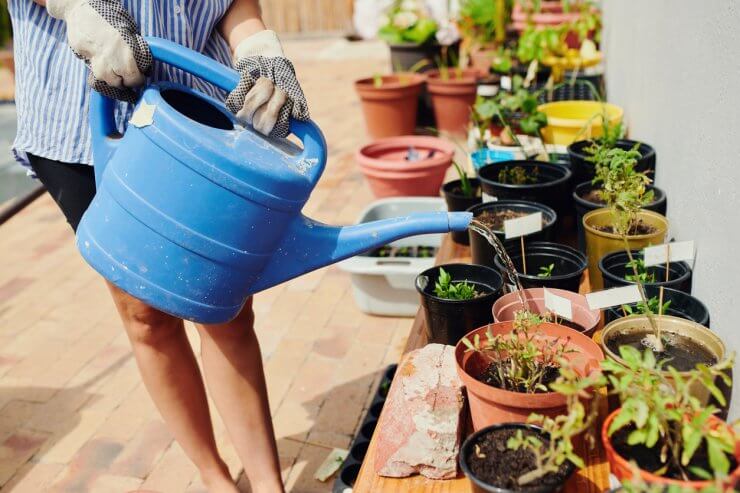
I’m not quite sure why I own so many watering cans, but my first guess is that I need a support group. My second guess is that I’ve spent a lot of time trying to find one that actually works well. And my third is that I forget how many I already have and my ratio of plants to watering cans. I know I’m not the only absent-minded gardener out there. Show yourselves, friends! Based on the sheer volume of my personal collection, and queries in my gardening groups, I’ve put together a list of the best-of-the-best watering cans for outdoor gardeners.
Now, if you’re looking for a statement piece of a watering can that is more of a secret handshake to your “plant mom” friends when they come over to fawn over succulents, this list is not for you. Wirecutter already put together a perfectly good list of watering cans for people who don’t actually water plants, and my eyes haven’t yet come unrolled. But for the record, they like the Brilliest Long Plastic Spout Watering Can, which I actually do like for indoor plants.
Personally, I would have gone with this silly one they tested, just for fun:
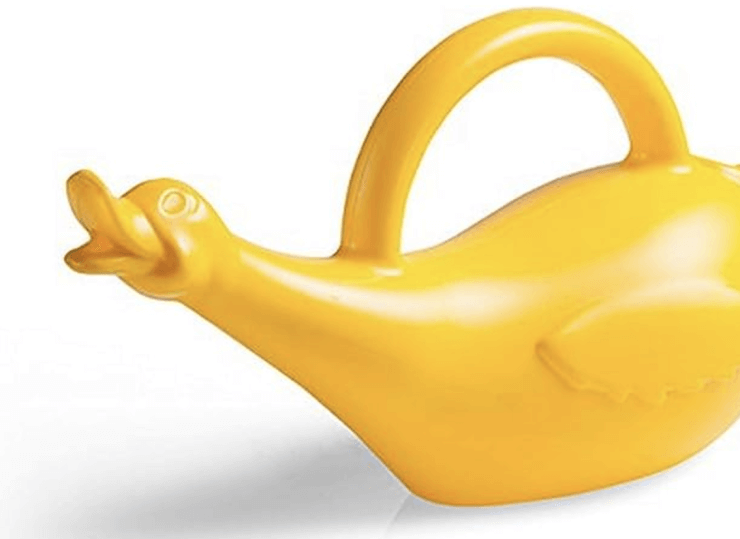
But if you have an entire produce section in your backyard that depends on you, then I hope you’ll find what you need below. A hose is great for so many things, but when it comes to fertilizing and soaking the roots to avoid disease on the leaves, these babies are all you need.
Discover 7 top tips for growing, harvesting, and enjoying tomatoes from your home garden—when you access the FREE guide The Best Way to Grow Tomatoes, right now!
Best indoor watering can
Now that I just flicked the chip off my shoulder that came with me in that introduction, I’m going to start with something light and slightly contradictory. For those who grow hydroponic gardens in the winter that need spraying, but also have citrus trees growing indoors, I have the perfect tool for you that blends a mister and watering can into one. I like it so much that I think it deserves to be at the top of our list because it’s so space-saving, but it’s pretty limited in its use to just indoor gardening because it’s a simple, small spout and only holds about half a gallon of water. I also like it for watering and misting my seedling trays in the winter.
Time Concept Garden Spray Bottle
Best watering cans for little kids
My daughter has been out gardening with me since she could walk, and my biggest pet peeve with watering cans for younger kids is that they are just too big. Once filled with water, they can become impossible to carry, so instead, little kids just sort of drag it to their spot, while water pours out the spout. Even these adorable elephant watering cans are enormous to the average 3- or 4-year-old. For me, a watering can for toddlers and little kids should hold less than a quart and be: small, sturdy, cheap, lightweight, and have a large filling hole.
That’s why, for my pick, I like this Hape watering can. It’s less than $10 and built to withstand beach play, so it’s pretty solid. And it’s small enough for little hands with a short spout that gives them immediate feedback, which sensory-wise is a plus. It’s also easy for toddlers to fill from a water bucket, and for parents to clean out when they inevitably fill it with rocks.
Hape Sand and Beach Toy Watering Can
P.S. I used to love the Melissa & Doug watering can for the same reasons, but the handle and spout break off too easily.
Best 2-gallon plastic watering can for big kids grown ups
That’s us! So listen, I actually have a few good picks here, and narrowing it down to one wasn’t easy. I really like the Bloem 2.6g Easy Pour Watering Can because it has an extra handle that makes it easier to carry 3 gallons of water. But as much as I love it, I’m always reaching for this fella below, because it’s just super simple and less bulky to use. The handle makes it easy to pour close to you, but the extension of the handle makes it just as easy to pour further away. I’m a big fan of this traditional watering can, and Bloem cans in general.
Bloem 2 Gallon Light Weight Traditional Watering Can
Best 2-gallon steel watering can
Hands down, no competitors out there can beat the Behrens Rust-Proof Steel Watering Can. They make them in a few sizes, but I like the 2 1/2 gallon size. It’s just heavy enough to hold a ton of water in one try, but not enough to make me cry about carrying it. The rose (that piece that turns the river of a spout into gentle rain) is also fully emblazoned on there and won’t pop off like they do on some larger plastic watering cans.
Behrens 2 1/2 Gallon Rust-Proof Steel Watering Can
Best 1-gallon watering can
Not everyone likes filling and carrying a 2-gallon can, which I totally understand, so I’ve included a 1-gallon can on the list. This is the can I often use for fertilizer and compost tea, though I use my 2-gallon cans as well. I tend to use this for my potted veggies, rather than my bigger garden, because it’s closer to the hose and I can refill it easier. Construction-wise, I like the tilted rose, so that you don’t have to tip as hard to water your plants, plus it’s removable if needed.
Fasmov Plastic Watering Can
How to choose the best watering can for you
Style: Snark aside, you might like a watering can that looks great in your home or garden, especially since most people don’t store their watering cans in a shed between every watering session.
Volume and flow rate of water: An outdoor watering can should hold at least a gallon, but ideally 2 gallons, with a solid and sturdy handle. The size of your spout will determine your flow rate. A larger spout will allow more water out for soaking mature plants, whereas a more narrow spout is better for smaller container plants.
Construction: If made with plastic, a solid piece of plastic with little or no seam would be best so that it doesn’t have any weak points, though it doesn’t mean one with a single seam will break, either. If made with any type of metal, look for rust-resistant or rust-proof types, since they spend most of their lives in contact with water and can become a hazard if they rust.
Handles: Buy a watering can that’s easy to use. This means you should look for one that has a comfortable handle, which can mean different things to everyone. For example, some might like an ergonomic handle, but I prefer one that’s smooth so that you can hold it in any spot and at any angle, and the grip is the same. Watering cans that have a seam on the inside of the handle (a good majority of them) can get uncomfortable when the cans are full.
Spouts: When putting a rose on your watering cans, you can buy it with the rose permanently attached or removable. I go for the ones that stay attached and use a separate can without one when needed.
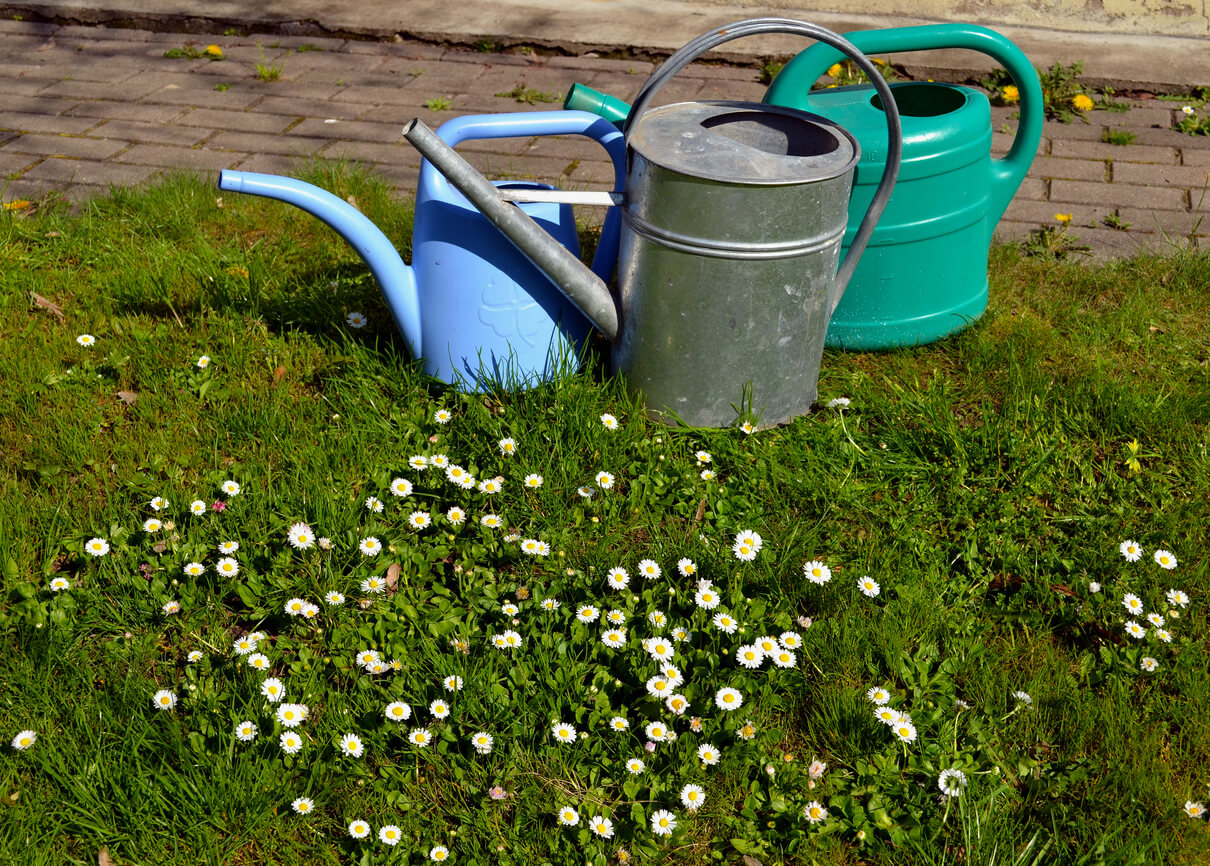
Different materials for watering cans
Copper: Copper watering cans have been a popular option for years because they look great on a shelf and are very long-lasting, though I rarely see them hold high volume for outdoor gardens, and they rust, so they need to be maintained.
Galvanized Steel /Stainless Steel / Aluminum: Steel is commonly used to make watering cans. They are long-lasting, rust-resistant, and sturdy, making them perfect for indoor or outdoor use. They can be a bit heavier than other materials, but they’ll last forever.
Plastic: Plastic watering cans are a common and affordable choice for the average gardener. They are light, easy to clean and store, and can come in various colors and styles. However, while plastic watering cans are great for general gardening, they do not stand up well to extreme weather conditions and can break or crack. There’s also the question of what’s leaching into the water you’re pouring out to consider, but I worry more about that with rain buckets than watering cans.

Size and weights of watering cans
When buying a watering can, ensure it’s the right size for your garden and watering needs. For example, if you have a small container garden, you can probably get away with a smaller 1-gallon watering can.
A more extensive garden, however, might require a larger 2-gallon or 3-gallon watering can. It also depends on how far you are from your water source. If your garden lives next to the hose, then you can get away with a smaller can and more refills.
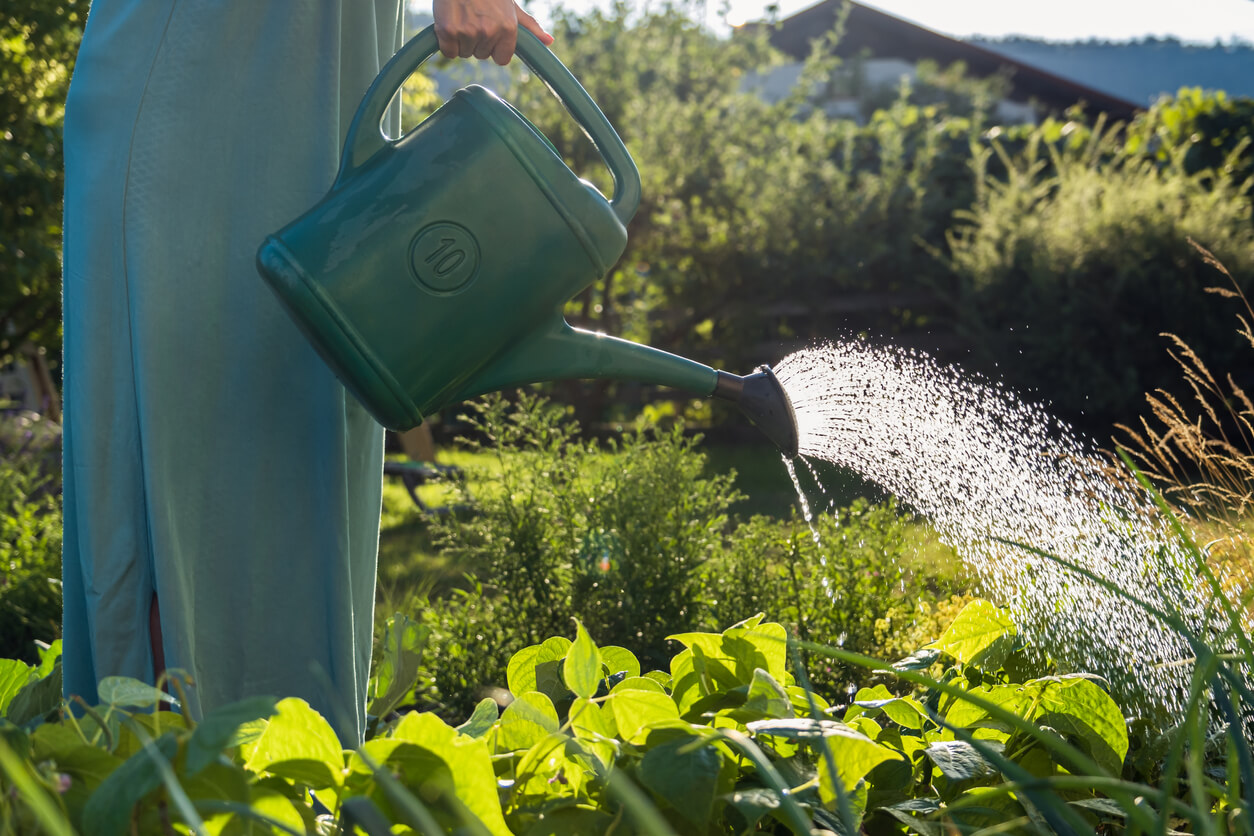
Spout, rose, or both?
The spout design on your watering can will affect how you water your garden. For example, you might want a watering can with a large spout for soaking large areas at a time. Or you might prefer a fine spout for watering small plants in smaller pots. The spout design will also affect how much water you use during each watering session. If you want that gentle shower effect, you’ll add a rose (basically a shower head) to the end of it. Typically you use a rose on younger plants, and can remove it once plants are established half-way through the season.
Streaming Spout: A streaming spout will produce a vast stream of water that’s great for watering large areas such as a garden bed, not individual plants. You can also attach a rose to the end, giving you a generous shower effect.
Fine Spout: A fine spout is great if you have small plants that need watering, but don’t want to over-water them. A fine spout will let out a small stream of water. I find it particularly useful in my vertical lettuce garden.
Rose: The rose is the shower head-looking attachment you insert into the spout or that comes affixed. Watering with a rose makes the flow more gentle, which is good for all plants, especially young seedlings.
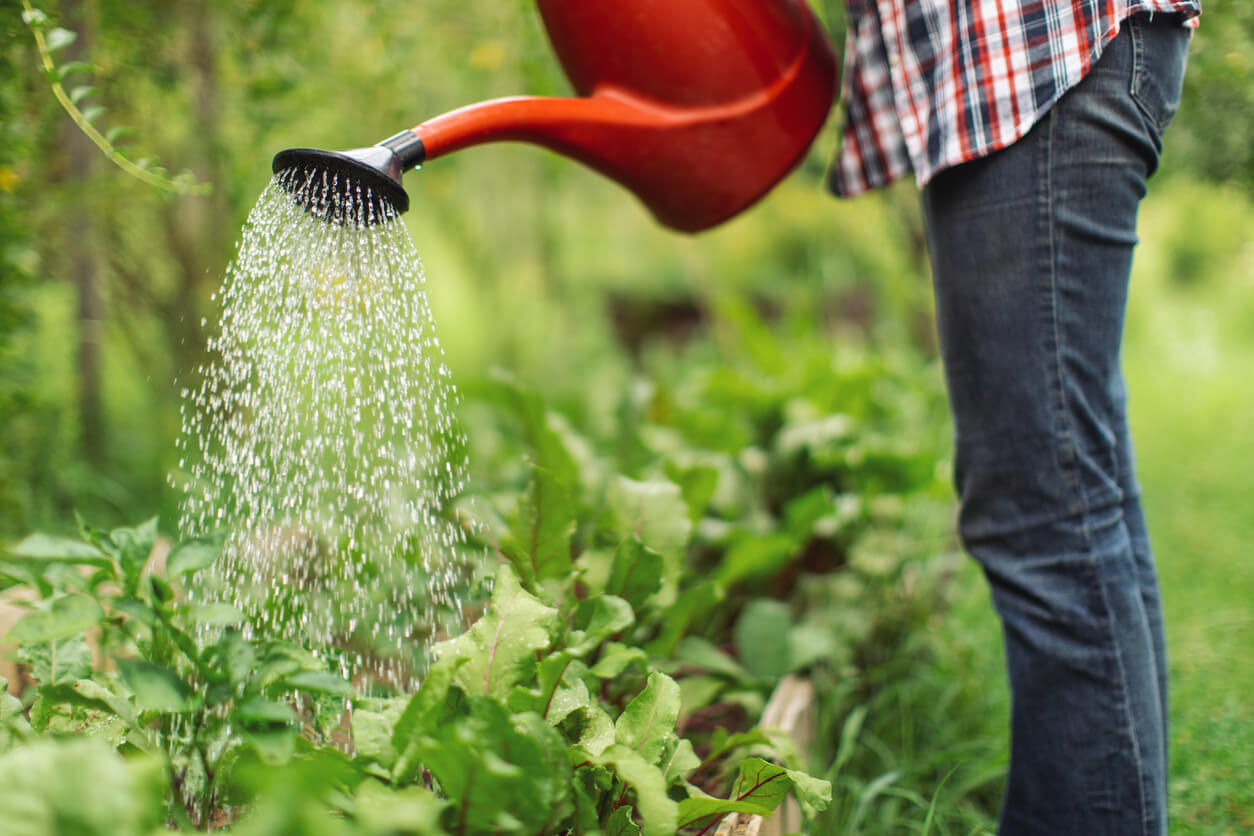
How to choose the best watering can
With all the different watering cans out there, it can be challenging to know which one to buy. When choosing a watering can, you need to think about a few things, such as the size of your garden, whether you can hold a jug (or two) of milk with one hand, and how much maintenance you’re up for in a watering can. A good watering can will last you many years, so it’s essential to choose one that will meet your watering needs while being easy to use.
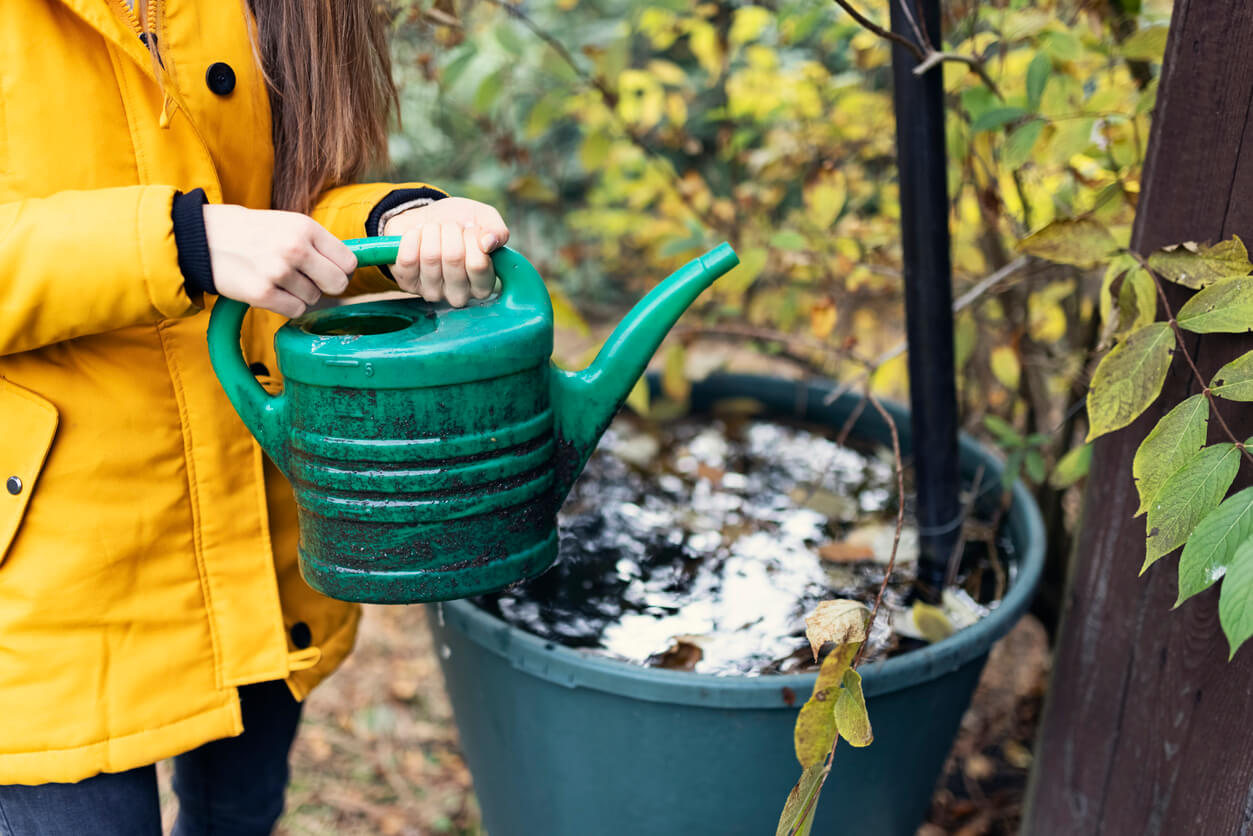
Taking care of the best watering can
Wait, buying the best watering doesn’t mean you can just let it alone to its own devices.
Plastic watering cans need the least amount of work. They will likely get some algae and gunk, but they’re usually dishwasher-friendly if needed. The downside of plastic is that you should keep it out of the sun and snow, so it doesn’t degrade as quickly. Definitely don’t leave it full of water over winter because it can crack and break as the water expands.
Metal watering cans are their own universe. Brass and copper cans will rust and oxidize if left full of water, so if you’re going for a look, those will need to be polished often. Limescale will eat away at the copper, in particular. Steel doesn’t need much help, but it’s best, again, not to leave it full of water and never let it freeze in the winter because it’ll expand the seams, and you’ll end up with leaks.
Now that you know what to look for in the best watering can, it’s time to decide which one to buy. Hopefully, the options above will help! Select a watering can made of high-quality materials that is easy to use and will last you for years. And remember, no matter which watering can you choose, you’ll need to clean it regularly to prevent it from rusting and clogging.
What’s your favorite watering can? Leave a comment and let me know!
Note: Food Gardening Network contains links to affiliate websites, including Amazon and Rakuten Affiliate Network, and we may receive a commission for any eligible purchases made by you through links on this page. Any reviews are based on honest reviews of the products.
Discover 7 top tips for growing, harvesting, and enjoying tomatoes from your home garden—when you access the FREE guide The Best Way to Grow Tomatoes, right now!





I use a clear orange juice jug. It holds about 3-4 L of water, has a sturdy handle and a nice little spout for easy pouring. Kids can SEE the water and can tell where t’s going and how hard to pour.
My favorite watering can is decades old, but it’s sadly in slow decay and actually patched up with Flex-Seal products. It has so many features that I like, among them are: 2 gallon capacity; 2 attachments for the spout that conveniently snap on for storage; the good sized opening at the top is not blocked by any handles and makes for easy filling and stirring; 2 handles help to distribute the water, especially when full; and the body is translucent and has quantity markings. This makes for easy viewing, from the outside, of water with product in the can, when you want to have accurate volume measurements.
I’ve looked everywhere for one just like it (for years), but so far no luck.
I will Pray for you. There is a Help group out there; WaCaLHOLIC Ha Ha . for me its hand pruners.
GOOD JOB, BOB M.
Ha! Sign me up!